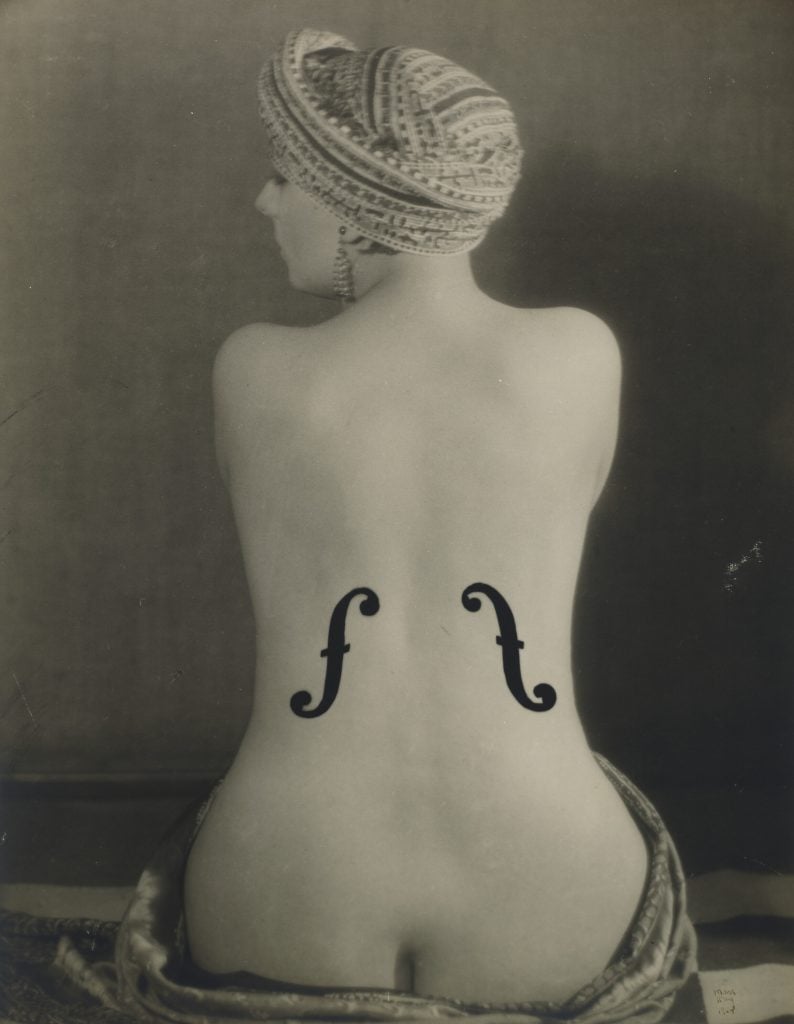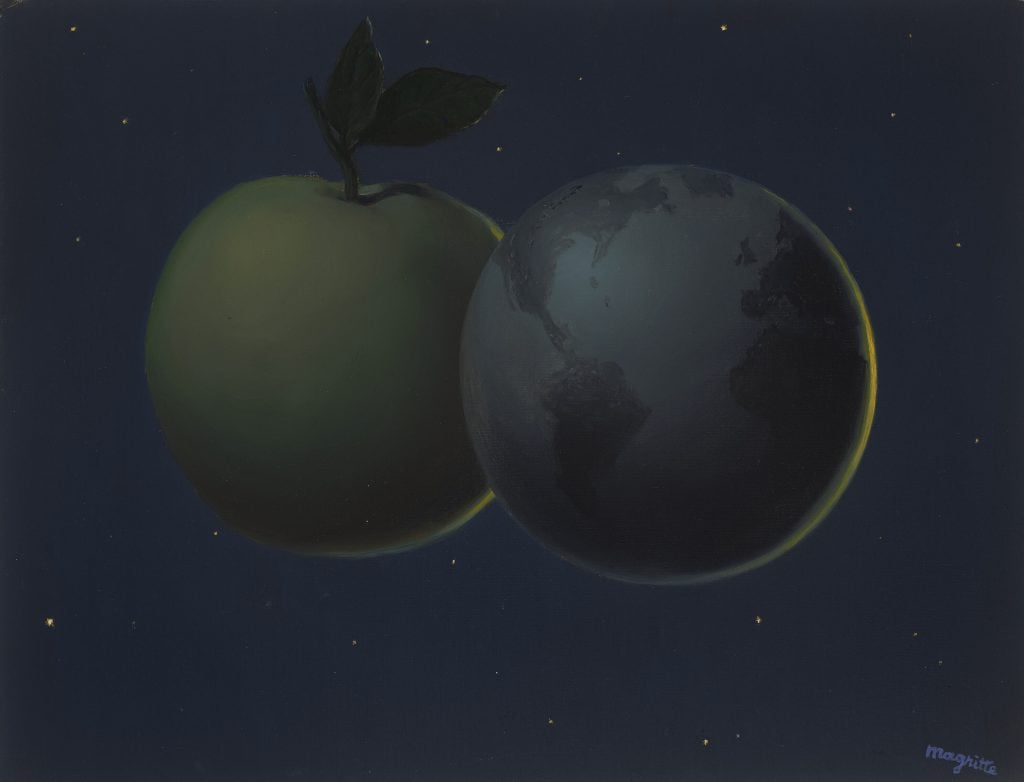Auctions
This Iconic Man Ray Print Just Became the Most Expensive Photograph Ever Sold at Auction
The sale was dedicated to the Surrealism-heavy collection of Rosalind Gersten Jacobs and Melvin Jacobs.

The sale was dedicated to the Surrealism-heavy collection of Rosalind Gersten Jacobs and Melvin Jacobs.

Taylor Dafoe

This weekend, an iconic Man Ray print sold for $12.4 million at Christie’s, nearly tripling the record for the most expensive photograph ever sold at auction.
A prolonged bidding war pushed the piece well past its $5 million to $7 million pre-sale estimate—which itself would have been a record—during a sale dedicated to the Surrealist collection of Rosalind Gersten Jacobs and Melvin Jacobs on May 14. Cashing in on a recent market trend toward the mid-century movement, the event netted more than $42 million in total, far exceeding the pre-sale expectation of $19 million to $30 million.
Juxtaposing the curves of the female form with those of a hollowed stringed instrument, Ray’s image, Le Violon d’Ingres (1924), depicts the bare back of model Kiki de Montparnasse overlaid with f-holes. It debuted in the Surrealist magazine Littérature in 1924. (Read Artnet News’s recent breakdown of the photograph here.)
Ray conceived the piece as an homage to French Neoclassical painter Jean-Auguste-Dominique Ingres, whose habit of playing violin led to the coining of the French phrase violon d’Ingres to connote a craftperson’s secondary hobby. For the photographer, de Montparnasse was a kind of violon d’Ingres: a model, but also his lover at the time.
One of Ray’s best-known artworks, it is, to many, also among the greatest images of the 20th century. Darius Himes, Christie’s International Head of Photographs, belongs to that group.
“Surrealism as an artistic movement has seeped into our consciousness over the course of 100 years now, and no work more so than Man Ray’s Le Violon d’Ingres from 1924,” he told Artnet News in an email. “There are no other photographs that have proven to have the lasting power and playful eroticism that define the Surrealists of the 1920s. It ranks among the most influential works of art—let alone photographs—of the 20th century.”

René Magritte, L’autre son de cloche (1951). Courtesy of Christie’s.
The Jacobs, successful fashion retailers who befriended many Surrealist artists in the 1950s and 1960s—including Max Ernst and Yves Tanguy—acquired the gelatin silver print directly from Ray in 1962. It’s one of just two the artist made shortly after completing the image in 1924 and is significantly larger than the other, which was once owned by Andre Breton and now resides in the collection of the Centre Pompidou.
On the smaller print, Ray hand-painted the f-holes with ink. The Jacobs print, on the other hand, was entirely made in a dark room, the violin marks burned on through overexposure.
“A quick sequence of developer, stop, and fixer baths ‘fixed’ the image permanently onto the paper, and thus in our mind’s eye,” Himes added, calling the print a “true masterpiece of vision and wit, art historical reference, and that rare combination of straight and manipulated photography.”
Other highlights in Saturday’s auction included’s René Magritte’s 1951 painting of Earth and an apple, L’autre son de cloche, which went for $10 million (pre-sale estimate of $4 million to $7 million); Dorothea Tanning’s 1955 oil abstraction Le mal oublié, which sold for $1.4 million ($300,000-$500,000); and a 1969 Vija Celmins untitled graphite illustration of Mars, which took in $1.2 million ($1.8 million-$2.5 million).
The Man Ray sale signaled strong ongoing market interest in Surrealism, which has been the subject of several recent high-profile sales and is a major theme at this year’s Venice Biennale.
In March, Sotheby’s first sale dedicated to the movement brought in €33 million ($36.7 million) at its Paris headquarters, setting a new €10 million ($11 million) auction record for Francis Picabia along the way. Earlier that month, Sotheby’s London also scored an auction record for Magritte, selling one of his Empire of Light canvases for £59.4 million ($79.7 million).